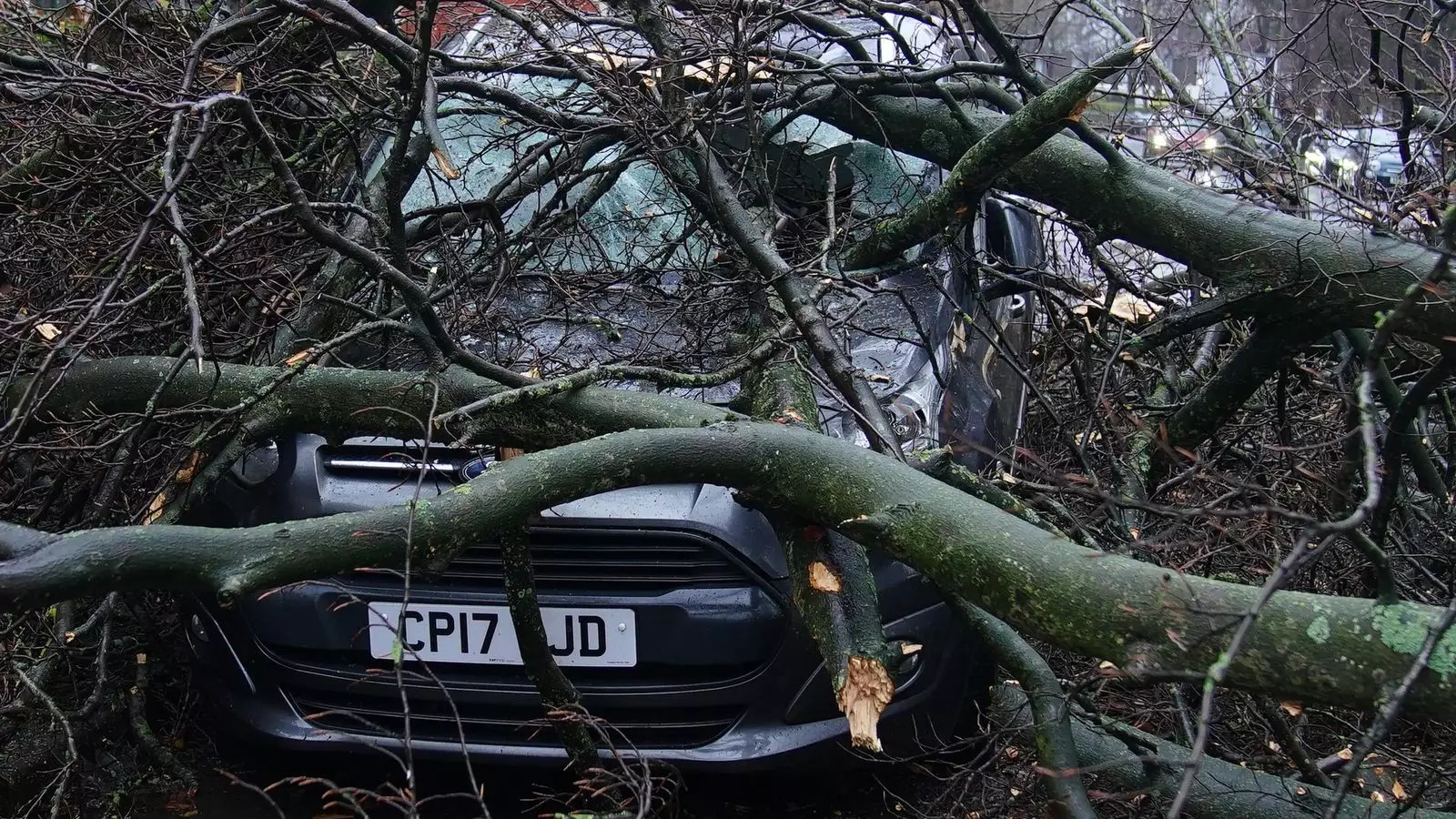Storm Darragh has left a harsh mark on the UK, descending upon the nation with violent winds and unfortunate consequences. As communities struggle to recover, the UK faces yet another wave of harsh weather conditions. The Met Office has issued new yellow wind warnings, effective from 6 am, which are set to affect large parts of England and Wales. This situation raises significant concerns regarding travel disruptions, power outages, and potential dangers that many residents will have to navigate in the upcoming days.
The storm wreaked havoc, with wind gusts reaching up to 93 mph in various locations, resulting in a staggering 259,000 homes losing power. Thankfully, reports from the Energy Networks Association indicate that approximately 80% of affected households have had their electricity restored, although many still remain in the dark. Sure, the restoration efforts are commendable, yet the speed with which power outages occur following severe weather illustrates the pressing need for improved infrastructure and emergency preparedness, particularly in areas frequently battered by storms.
Among the most heartrending outcomes of Storm Darragh were the tragic fatalities incurred. Two individuals lost their lives due to fallen trees spurred by the hazardous wind conditions. The loss of life is always a stark reminder of the unyielding power of nature and often leaves families and communities devastated. Law enforcement officials from the West Midlands and Lancashire are keenly investigating these incidents, emphasizing the importance of public safety and urging witnesses to come forward if they have any relevant information. This solemnity is countered by an unsettling feeling—had more comprehensive warnings been issued, could these lives have been saved?
As the Met Office continues to notify the public about the forecasted winds, conditions are expected to exacerbate, with gusts of 35 to 45 mph anticipated across sectors of England and Wales. Coastal areas could face even higher wind speeds, approximating 70 mph. Communities are urged to stay vigilant and take necessary precautions. Local councils and emergency services are mobilized and ready to respond, showcasing the resilience and solidarity so quintessential to British society. However, one cannot ignore the psychological toll that incessant bad weather inflicts on the populace, weary from months of tumultuous conditions.
With 56 flood warnings from the Environment Agency signaling that flooding is likely, it becomes crucial for residents to prepare for the worst as Storm Darragh’s effects linger. Authorities are not only focused on immediate recovery but are also using this situation to assess and improve future disaster responses. Whether it’s enhancing weather forecasting accuracy or investing in infrastructural improvements, it is clear that the remnants of Storm Darragh represent more than just difficult weather—the potential for change and better preparedness in the face of nature’s fierce display is apparent.
As the UK braces for further winds, the nation must reflect on this storm’s implications, not only for surviving future occurrences but for thriving despite them.

Leave a Reply